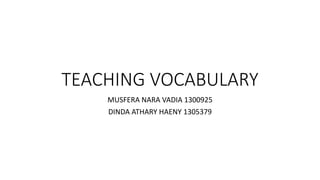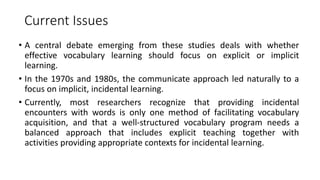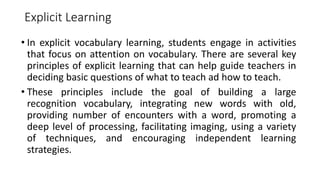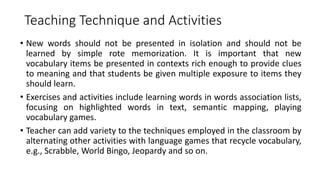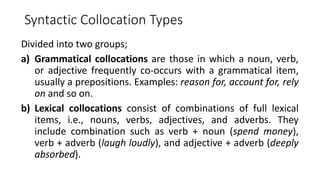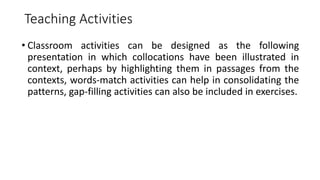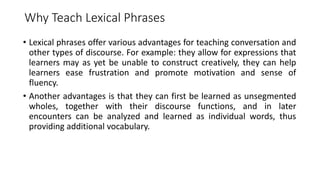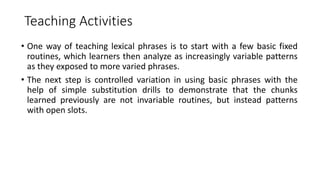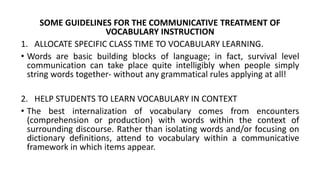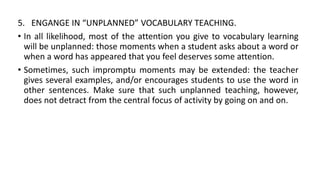This document discusses different approaches to teaching vocabulary, including both explicit and implicit methods. It outlines key principles of explicit vocabulary instruction, such as building a large word bank and providing multiple exposures. A variety of teaching techniques are presented, like using words in context, games, and strategies for independent learning. Specific strategies covered include guessing meanings, using mnemonic devices, notebooks, teaching collocations and idioms. Guidelines emphasize teaching words in communicative contexts and encouraging learner strategies over dictionary use.
